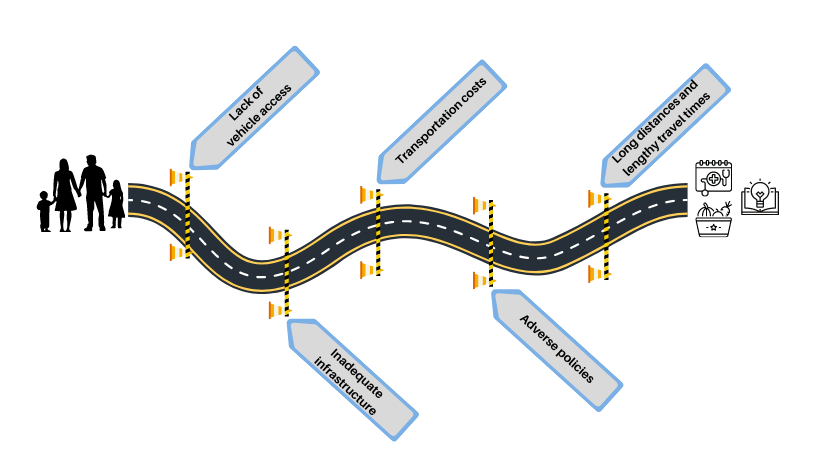Imagine having a doctor’s appointment in two hours and your friend who planned to take you was called into work last minute; you no longer have a ride. There are other options:
- You could take the bus, but you aren’t within walking distance of a stop. Even if you were near a bus stop, the timing can be unpredictable and take a few hours to arrive at your destination
- You can’t reserve a ride because the company requires at least one day notice to be picked up from your home
- Other friends and family members are unavailable
- Uber or Lyft is very expensive
What do you do? The only answer is to cancel the appointment, which stops you from getting the necessary treatment and/or medications you need to be healthier.
Transportation as a Social Determinant of Health (SDOH) affects nearly every other SDOH because it hinders access to needed services, whether it be a doctor’s appointment, trip to the grocery store, and many other places.
Cambria County is mostly rural, but has a small urban pocket. According to a Stacker.com article, Cambria County is 90.8% or 625 square miles rural compared to 9.2% urban or 63 square miles. Unique transportation and health problems exist in both areas, though.
In June 2020, The American Journal of Public Health (AJPH) published an article regarding transportation barriers and health care. The article used findings from the National Health Interview Survey (1997-2017).
The AJPH article reports, “Some studies have found that patients who live in nonurban areas face greater transportation barriers to health care access than do their urban counterparts. Compared with people living in urban areas, rural residents reported longer travel time to see a physician, particularly a specialist.”
In comparison, the AJPH article states “Even in urban areas where health care facilities may be closer, low-income neighborhoods often rely on aging transportation infrastructure, unreliable service, or fixed routes with service areas that do no align with medical facility destinations.”
There can also be miscommunication and difficult to read bus routes for urban residents.
In many instances, people who are lower income, or underinsured or uninsured experience a lack of stable transportation.
According to the AJPH article, “This population of people, frequently referred to as ‘transportation-disadvantaged,’ often shift their care-seeking to more costly, acute-care settings” like an emergency department – because of preference or convenience.
Lack of vehicle access, inadequate infrastructure, long distances and lengthy times to reach needed services, transportation costs, and adverse policies that affect travel are all considered transportation issues, according to AHA.
In order to better serve areas and individuals who are considered transportation-disadvantaged, creating communities that are walkable, have bike lanes and bike share programs, and have affordable transportation is imperative.
In Cambria and Somerset counties, we are fortunate to have public transportation resources available through Matp, CamTran (Cambria County) and Tableland (Somerset County).
Sources:
https://stacker.com/pennsylvania/most-rural-counties-pennsylvania#:~:text=%20Most%20rural%20counties%20in%20Pennsylvania%20%201,%2029%2048.%20Erie%20County.%20%20More%20
https://ajph.aphapublications.org/doi/10.2105/AJPH.2020.305579

